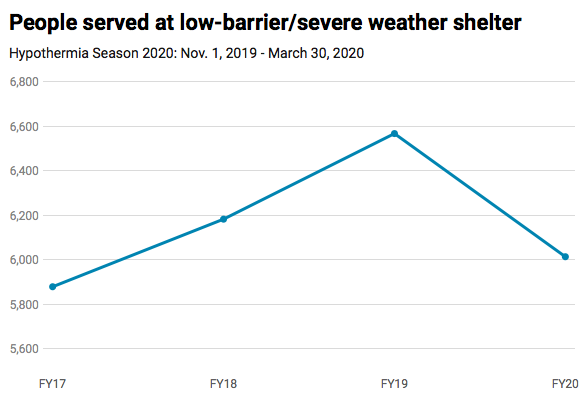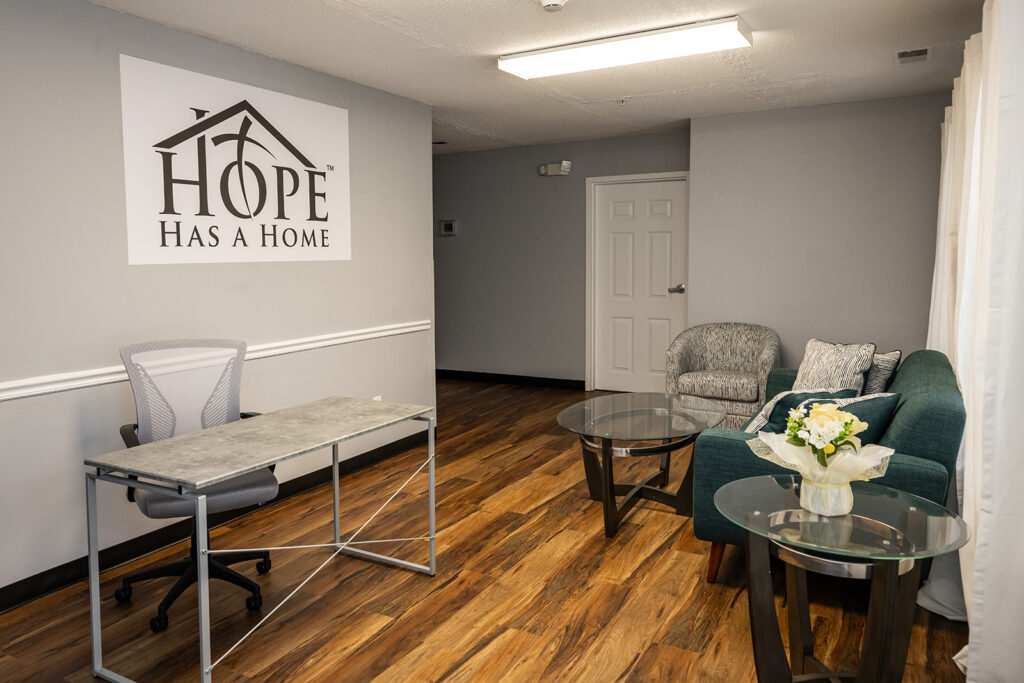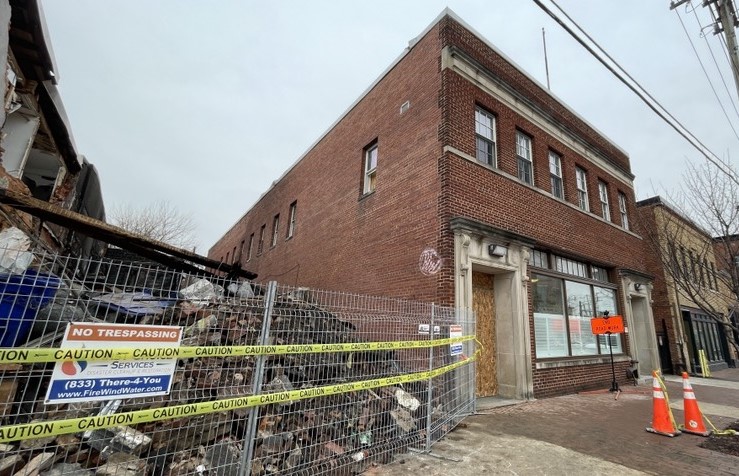This article was featured in the May 27 digital-only edition of Street Sense. Until it is safe to resume person-to-person sales, you’ll always be able to find the current digital-only edition at streetsensemedia.org/Digital Thank you for reading! Please continue to support our vendors through our mobile app (streetsensemedia.org/App).
With winter now over, The Community Partnership for the Prevention of Homelessness released its annual hypothermia debrief, detailing the demographics of those served at low-barrier and severe-weather shelters during the 2019–20 hypothermia season.
This year’s data pointed to a moderate decline in usage of D.C.’s hypothermia resources by single adults in winter 2020 compared to a spike in usage in 2019, but still in line with an overall increase over the last four years.
Between Nov. 1 and March 31, the District’s low-barrier or severe-weather shelters were used by 6,014 unaccompanied adults, compared to 6,568 during the same time frame the previous year. Both figures, however, are an increase from the 5,789 unaccompanied adults who used the shelters in the winter of 2017.
The 2020 decrease can partly be explained by fewer cold weather and hypothermia alerts from the previous season. D.C.’s Department of Human Services called 81 hypothermia alerts and five cold weather alerts this past season compared to 96 and 15, respectively, in 2019. Low-barrier or severe weather shelters average more occupants on those nights.
DHS calls hypothermia alerts either when forecasts predict temperatures will be 32 degrees Fahrenheit or below or if forecasts predict temperatures at 40 degrees or below with at least a 50% chance of precipitation.
The average length of a stay in the shelters was 37 nights for men and 49 nights for women — both slight increases from the previous year. In the winter of 2017, those figures were just 11 nights for men and 10 for women.
This year’s data also reflected increasing the occupancy at the Harriet Tubman Women’s Shelter, from 100 beds last winter to 175 beds this winter. The Harriet Tubman shelter averaged an occupancy of 100 — the maximum — on nights when a hypothermia alert was issued during the 2019 season, according to the debrief.
Demand rose to almost completely meet the increased supply in beds at the shelter. The average shelter occupancy rose to 165 people per night for the 2020 season.
Other data points remained mostly steady across recent years. For at least the past four years, 75% or more of the individuals served in each hypothermia season have been men. The 2019 Point in Time Count, the annual “snapshot” used to determine the scope of homelessness in D.C., reported similar numbers — 73% of respondents were male.
The hypothermia shelters as a whole accommodated an average of 1,094 men on alert nights during the 2020 season with a maximum of 1,208. Meanwhile, the average and maximum for women’s shelters were 435 and 473, respectively — in line with previous years.
For the last four years, the age range for both men and women has hovered around 50. The most common range in 2020 was 51 to 60 years old, making up more than one-fourth of both the men and women who stayed at the shelters. However, younger age ranges made up slightly more of the total male population in 2020 than in 2019. For women, the age ranges of 25-30 and 31-40 also saw minor increases from the previous year.
“We know that a housing crisis can occur at any time and to anyone – regardless of age,” DHS told Street Sense Media. “Anyone experiencing a housing crisis in the District is encouraged to access our homeless services to help them stabilize and establish a plan to exit homelessness and transition into permanent housing.”
Outside of the data, DHS said the biggest challenges of this past hypothermia season were gaps in services for those with physical or mental health problems, the medically vulnerable, and couples and adult family members.
Eight people experiencing homelessness died from hypothermia from fiscal year 2016 to fiscal year 2019 — two each year. According to DHS, no hypothermia-related deaths occurred this past hypothermia season. The department attributed this to an expansion of services and outreach such as the Comprehensive Street Outreach Network, which provides support and case management for individuals without shelter or in uninhabitable locations, and Project Reconnect, a shelter diversion and rapid exit program for unaccompanied adults experiencing homelessness. Both launched in 2019.
Nonprofit organizations contracted to run the city’s shelters, such as Catholic Charities D.C. and N Street Village, collect the intake information year-round in compliance with the Homeless Emergency Assistance and Rapid Transition to Housing Act of 2009. The District, like any jurisdiction, is required to input data through the Homeless Management Information System database if they are to receive certain HUD funding. The Community Partnership for the Prevention of Homelessness, which the database, then queries the data from the system and compiles the report for D.C.’s Interagency Council on Homelessness.








